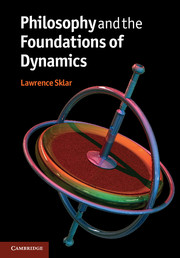Book contents
- Frontmatter
- Contents
- Chapter 1 Introduction
- Chapter 2 The pre-history of classical dynamics
- Chapter 3 The astronomical revolution
- Chapter 4 Precursors to Newtonian dynamics
- Chapter 5 The Newtonian synthesis
- Chapter 6 Philosophical aspects of the Newtonian synthesis
- Chapter 7 The history of statics
- Chapter 8 The development of dynamics after Newton
- Chapter 9 The “Newtonian” approach after Newton
- Chapter 10 From virtual work to Lagrange's equation
- Chapter 11 Extremal principles
- Chapter 12 Some philosophical reflections on explanation and theory
- Chapter 13 Conservation principles
- Chapter 14 Hamilton's equations
- Chapter 15 Canonical transformations, optical analogies and algebraic structures
- Chapter 16 The search for new foundations
- Chapter 17 New directions in the applications of dynamics
- Chapter 18 Spacetime formulations of Newtonian dynamics
- Chapter 19 Formalization: mass and force
- Chapter 20 Relationist dynamics
- Chapter 21 Modes of explanation
- Chapter 22 Retrospective and conclusions
- References
- Index
Chapter 3 - The astronomical revolution
Published online by Cambridge University Press: 05 December 2012
- Frontmatter
- Contents
- Chapter 1 Introduction
- Chapter 2 The pre-history of classical dynamics
- Chapter 3 The astronomical revolution
- Chapter 4 Precursors to Newtonian dynamics
- Chapter 5 The Newtonian synthesis
- Chapter 6 Philosophical aspects of the Newtonian synthesis
- Chapter 7 The history of statics
- Chapter 8 The development of dynamics after Newton
- Chapter 9 The “Newtonian” approach after Newton
- Chapter 10 From virtual work to Lagrange's equation
- Chapter 11 Extremal principles
- Chapter 12 Some philosophical reflections on explanation and theory
- Chapter 13 Conservation principles
- Chapter 14 Hamilton's equations
- Chapter 15 Canonical transformations, optical analogies and algebraic structures
- Chapter 16 The search for new foundations
- Chapter 17 New directions in the applications of dynamics
- Chapter 18 Spacetime formulations of Newtonian dynamics
- Chapter 19 Formalization: mass and force
- Chapter 20 Relationist dynamics
- Chapter 21 Modes of explanation
- Chapter 22 Retrospective and conclusions
- References
- Index
Summary
Copernicus
The Copernican heliocentric system
The great breakthrough that ultimately led to modern astronomy and cosmology came with Copernicus’ heliocentric system for describing the heavenly motions. But practically nothing one can say about Copernicus, either about his system or about its origins, is simple.
For one thing, the Copernican Universe is not the modern one, but the ancient cosmology in many of its most important respects. It is still a finite world bounded by a sphere of fixed stars. For another, Copernicus was not started on his path to his great discoveries by seeking a system that could use the Earth's motion to provide a more unified account of the apparent motions of the Sun and planets. Rather, he was dismayed by the appearance of the device of the equant point in Ptolemy's system and sought a means of eliminating it from an account of the heavens. Copernicus was even more devoted than the Greeks to the view that all the heavenly motions must be described in terms of pure circular motions in which everything moved uniformly about the circle with respect to the actual central point of the circle. Of course, hierarchies of circles, for example epicycles whose centers moved uniformly on deferent circles, were permissible.
- Type
- Chapter
- Information
- Philosophy and the Foundations of Dynamics , pp. 24 - 32Publisher: Cambridge University PressPrint publication year: 2012



